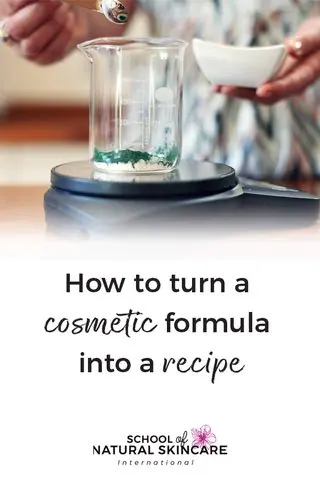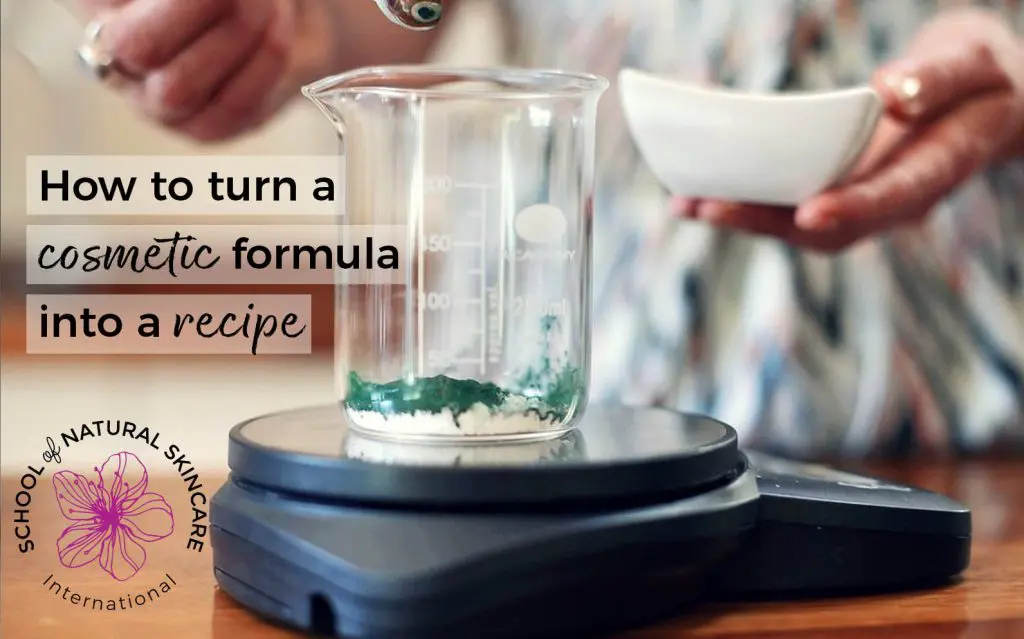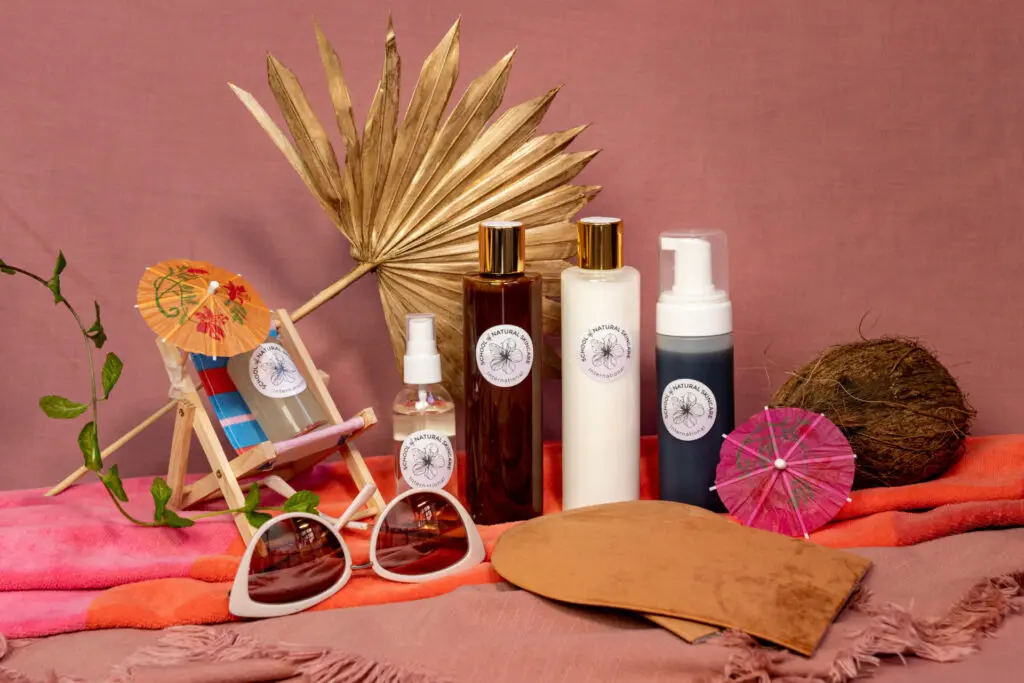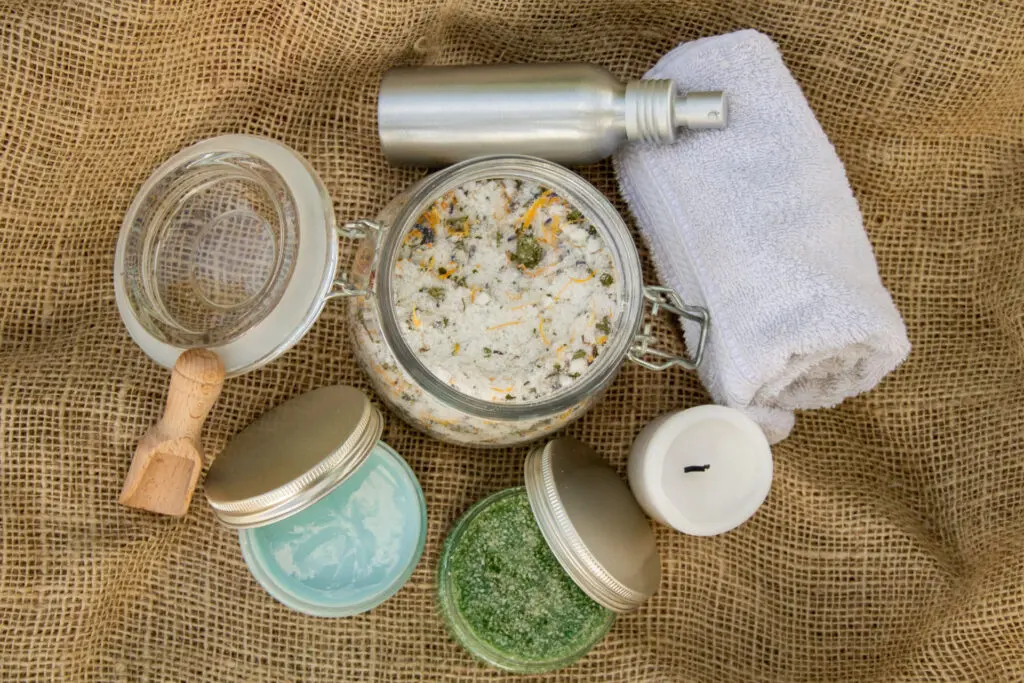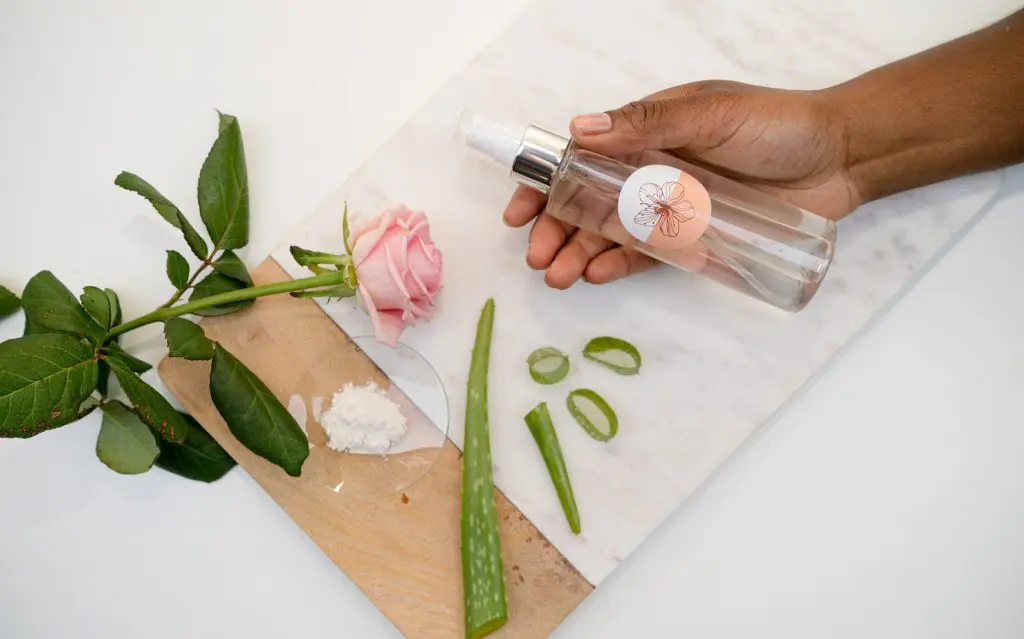Professional cosmetic formulas are written in percentages. So how do you convert a formula written in percentages into a weight based recipe you can make?
This article will explain:
- Converting a formula into a 100g test batch size
- How to calculate different batch sizes.
The examples used are for a simple skincare product, however the same calculations apply to any type of cosmetic product such as haircare or bodycare.

Converting a formula into a 100g test batch size
One of the benefits of writing a formula in percentages is that it’s very easy to make different batch sizes, and when we talk about a batch, we simply mean a quantity of your product. That could be large or small depending on how many individual products you want to make.
So let’s start with an easy example. Here is a simple formula for a facial oil which uses 50% jojoba, 30% rosehip, 18.4% macadamia, 1% lavender, 0.5% frankincense, 0.1% Vitamin E.
| Formula | 100g batch |
| 50% jojoba oil | 50g jojoba oil |
| 30% rosehip oil | 30g rosehip oil |
| 18.4% macadamia oil | 18.4g macadamia oil |
| 1% lavender essential oil | 1g lavender essential oil |
| 0.5% frankincense essential oil | 0.5g frankincense essential oil |
| 0.1 % Vitamin E | 0.1g Vitamin E |
If I wanted to start by making a 100 gram batch, this is a very easy calculation to make. So to change a formula into a 100 gram batch, all you need to do is replace the percentage symbol with grams symbol; you can do a straight swap. Fifty percent jojoba oil would be 50 grams of jojoba oil, 30% rosehip oil would be 30 grams of rosehip oil, etc. So as you can see, this is very easy to do.
If you want to make a test batch of something like a cream or a lotion or a body butter, then a 100-gram batch is a good size to start with. For those of you familiar with ounces, 100 grams is about three-and-a-half ounces.
How to calculate different batch sizes
When you’re confident that you like your product, and you don’t want to make any more adjustments to your formula, then you’ll most likely at some point want to make a larger batch size. To do this, you firstly need to decide how much product you want to make – the total size of your batch.
You then need to work out how much of each ingredient to use, and there is an easy calculation to make. This calculation is the percentage of the ingredient divided by 100, multiplied by the batch size.
percentage / 100 x batch size
In this example, we’ve chosen to make a 250-gram batch. So in the example of jojoba, this would be 50 divided by 100, multiplied by 250, equals 125 grams.
|
Formula |
250g batch |
|
50% jojoba oil |
125g jojoba oil |
|
30% rosehip oil |
75g rosehip oil |
|
18.4% macadamia oil |
46g macadamia oil |
|
1% lavender essential oil |
2.5g lavender essential oil |
|
0.5% frankincense essential oil |
1.25g frankincense essential oil |
|
0.1 % Vitamin E |
0.25g Vitamin E |
You simply need to do this calculation for every ingredient, and write down the corresponding weight of that ingredient that you would need to include in that batch. Once you’ve calculated all of the individual ingredient weights, total them up to check that the total weight equals the total batch size that you want to make, and then you’ll know that you’ve done all the calculations correctly.
As part of our formulation courses we provide a batch calculator. So all you need to do is to type in your batch size in the correct cell, and then your ingredient percentages in the correct cells, and the Excel sheet will calculate the weights for you.
So as you can see calculating different batch sizes is a necessary skill to make larger batches of your product. It’s an easy calculation to do but care must be taken to ensure it is correct.
Free Guide
The Beginner's Guide to Formulating Natural Skincare Products (From scratch, like a professional!)
Start creating your own natural skincare products from scratch – rather than simply following recipes!
Learn how to formulate like a pro and discover our top tips for becoming a confident skincare formulator.
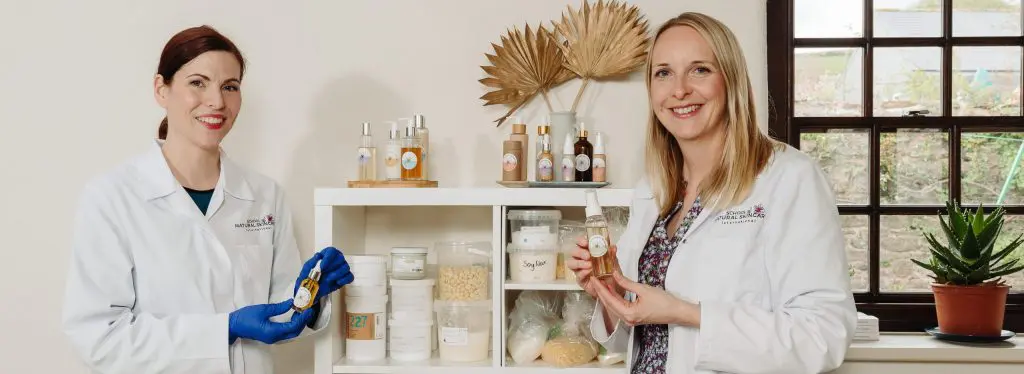
Exclusive for our newsletter subscribers. Sign up now.
We look after your data in accordance with our privacy policy.
Download this fabulous guide and you’ll learn:
- What formulating is and why you need to be doing it!
- The difference between following recipes and formulating your own products.
- Our step-by-step process to designing products people love.
- Four easy ways to personalize your skincare products.
- Choosing the right carrier oils for your beauty products.
- Plus, you’ll get our Safe Product Checklist: How to make sure the skincare products you make are safe and stable
Love this blog post? Save this image below on Pinterest so you can be sure to remember!
